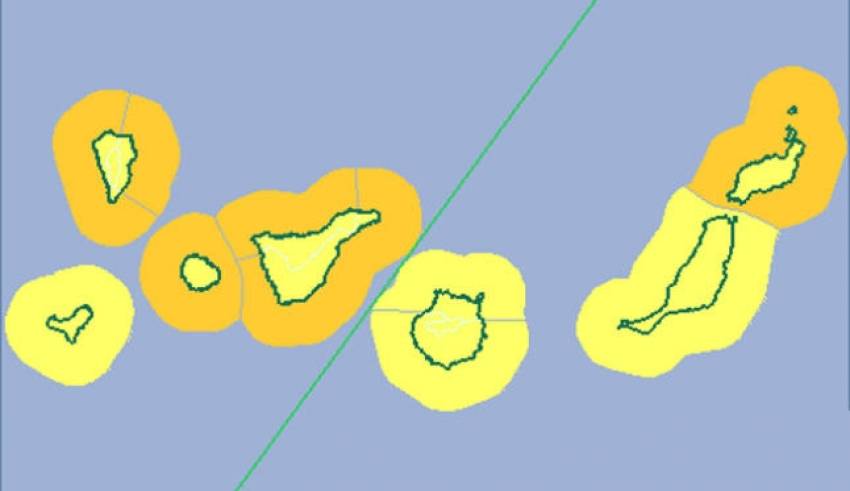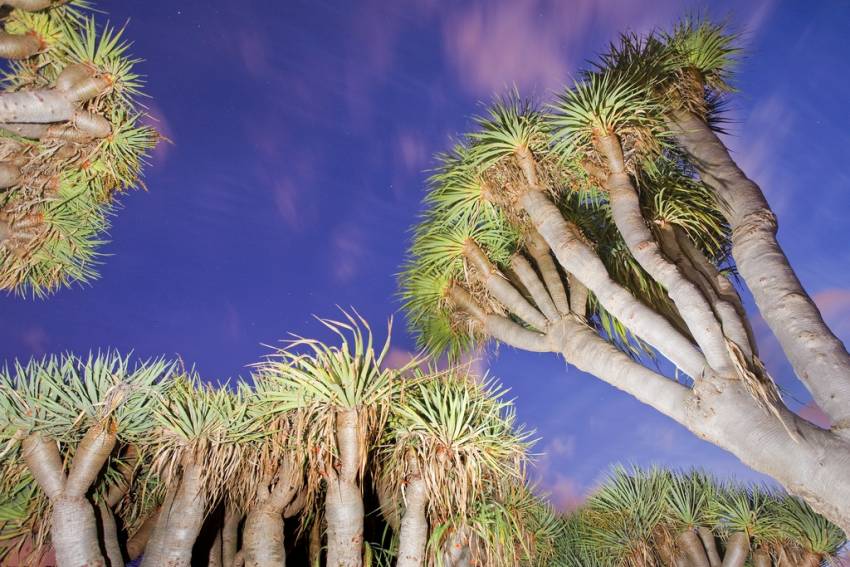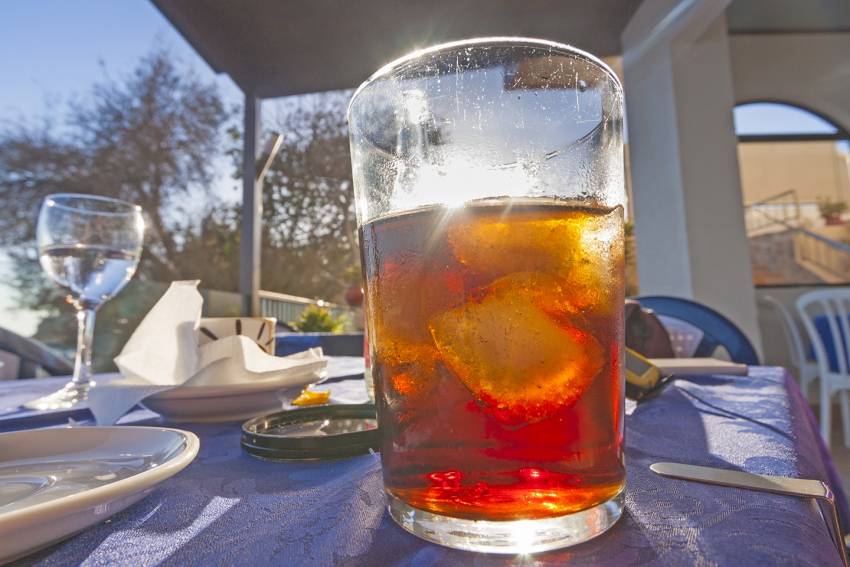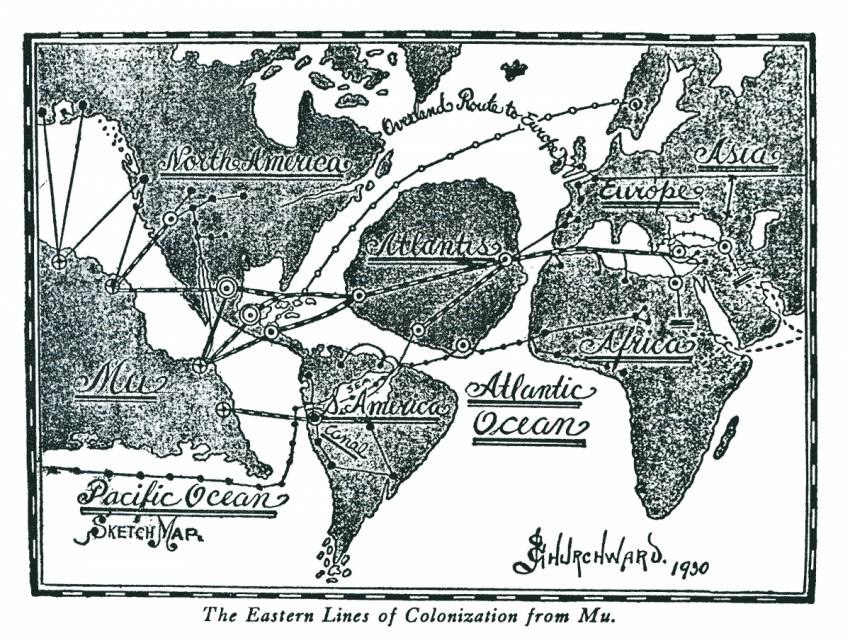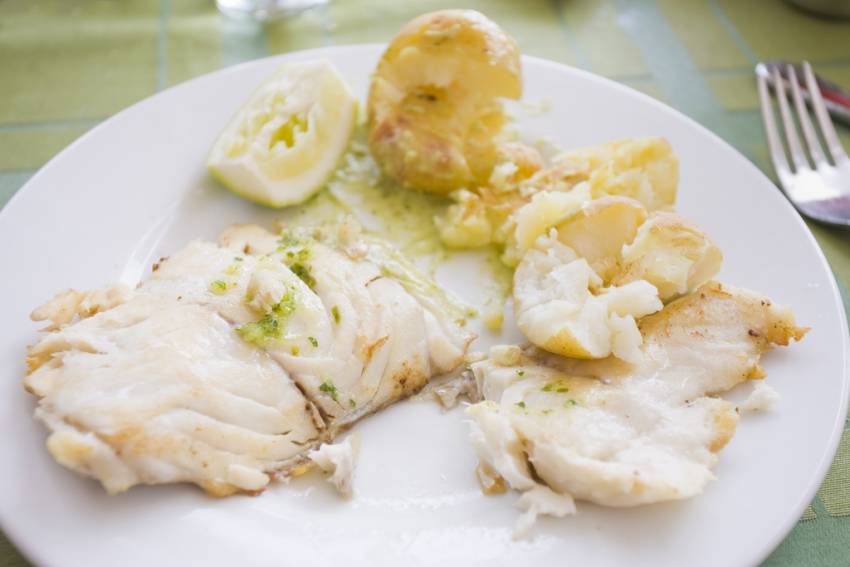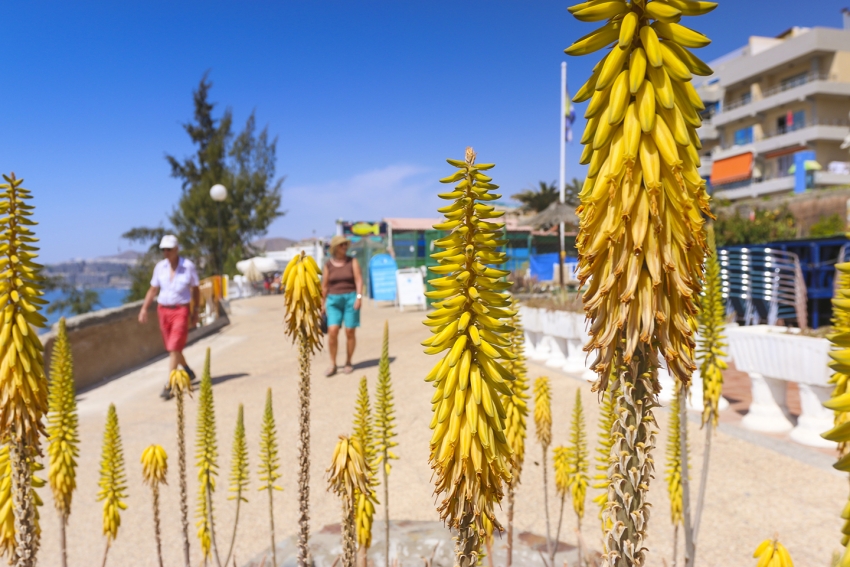Further Blow To Oil Industry Close To The Canary Islands
New York-listed Kosmos Energy has announced that the oil deposits it discovered in Morrocan waters north of the Canary Islands are commercially unviable and that it is sealing the well.
How To Choose And Enjoy Canary Islands Wine
Wine in the Canary Islands has a long history but has really come into its own in the past 10 years. New vineyards open every year and quality just goes up and up. To help you choose the right wine, here's our top tips for choosing and drinking Canary Islands wine.
Wind And Wave Alert For Gran Canaria
Winter just won't give up this year in Gran Canaria and the Canary Islands. The islands are on alert from high winds and big waves on Tuesday 24th and Wednesday 25th February.
Gran Canaria is not expected to get the worst of the waves or the wind but is expected to take a battering on Wednesday with gusts up to 65km per hour.
Please stay away from the shore on rocky coasts and don't walk near drop-offs up in the mountains.
Detailed info in Spanish here
Great Value Canary Islands Wines You Have To Try in Gran Canaria
The Canarian wine scene hasn't buzzed this much since Shakespeare's time. New wineries start up every year and there's always a new wine to try. However, because most wineries on the islands are small you can only buy them close to where they are grown. Great if you have the time and transport but a pain if you're in Gran Canaria on holiday.
Europe's Rarest Tree: The Mysterious Gran Canaria Dragon Tree
Only 70 of the Europe's rarest tree, the Gran Canaria dragon tree (Dracaena tamaranae), survive on the cliffs of the Arguineguin Valley just minutes drive from the island's main resorts.
How To Pour A Drink Gran Canaria Style
The first thing many visitors notice in Gran Canaria bars is the whopping drinks measures. A standard long drink contains between 75 and 100ml of spirits. The standard British single measure isn't enough to wet the ice cubes down here.
The Canary Islands And The Atlantis Legend
When Atlantis sank into the ocean its highest mountains remained as islands. These islands still exist today and are known as the Canary Islands. Their original inhabitants, the Guanches, were the descendants of the last surviving Atlanteans. That's the legend and some people are sticking to it.
Top Six Scary Gran Canaria Seafood Dishes
Canarian food is famous for its simple, tasty seafood like fried squid rings, delicious prawns and fish stew. However, delve a bit deeper into the local cuisine and some more exotic ocean ingredients and seafood dishes pop up.
Alex Says: 25 years ago I remember watching old women in Lanzarote, wearing huge hats and head scarves, munch their way through a whole bucket of live sea urchins or erizos de mar. The cracked each one open and sucked out the fresh roe, before baiting their fish traps with the shells. The fresh roe is soft and a bit slimy, but tastes fresh and slightly fishy. In Japan, it is highly prized for top quality sushi.
Live Sea Urchins
Sea urchins have become such a problem in parts of the Canaries that the government is trying to get Canarians to eat them more often. The roe, cooked down into a sauce, tastes intensely of the sea. Trouble is, you need to collect a lot of spiny urchins to make a plate of pasta! Each one gives you half a teaspoon of eggs.
Grilled Limpets
Another local speciality is grilled limpets or lapas, served with green mojo sauce (made from garlic, fresh coriander, chilli, vinegar and oil). Limpets are hard to collect because they live on rocks in rough areas and clamp down if you try and dislodge them. The best way to get them is to sneak up and side swipe them with a rock or an iron bar. Cooking limpets is easy as they come in their own little pot: Just add a dash of lemon juice and a teaspoon of green mojo to each upturned limpet, and put them under the grill until the meat comes away from the shells. Limpets are tasty but a little bit chewy, especially if overdone.
Harvesting mussels and limpets is currently restricted in the Canaries, and especially on Fuerteventura, as over-collection was damaging the ecosystem. The limpets you find in small local bars are almost all imported. They still taste the same, and the freezing even makes them slightly tenderer!
Fried Moray Eel
Moray eels are fatty and full of bones, with hardly any meat at all. That doesn't stop Canarians from chopping them up and deep frying the bits until they go crispy. Then they chew up the crisped eel (morena frita) and spit out the bones. Moray eel is very satisfying because it is greasy and tasty, but most people are put off by the bones. Personally, I prefer my moray eels live and wriggling about! They get up to six feet long and make the islands a more attractive Scuba destination.
Octopus Old Clothes
Octopus old clothes (ropa vieja de pulpo) is a stew made from chickpeas, onions, tomatoes and octopus. It is called old clothes stew or "ropa vieja" because legend states that it was first made by a man so poor that he boiled his own clothes. When he took the top of his pot, he found this delicious dish inside instead. When you sit down to a dish of octopus ropa vieja, try not to picture the naked man who first ate it!
Poached Parrotfish
Poached parrotfish (vieja jareada) is an iconic Canarian dish that never gets onto tourist menus because the Canarians keep all the parrotfish to themselves. They are beautiful, multi-coloured animals, with big beaky teeth, that live in shoals and eat crabs and urchins. Their meat is soft and flaky and falls apart unless cooked with care. Viejas are poached whole with onion, peppers and laurel leaves and served with the skin unbroken.
Viejas are traditionally caught from small boats using a glass-bottomed box or "mirafondos", and a cane rod tipped with a dried stingray tail for sensitivity. The fisherman, in a small rowing boat, moves over the rocks until he spots a shoal of viejas through his mirafondos. Then he drops his line, tipped with a long iron hook baited with a small crab amongst the fish. The big hook is essential as viejas can bite through nylon and small hooks with their strong teeth. Once a vieja bites, the fisherman whips it up away from the school quickly so as not to spook the others.
Viejas became very rare because of overfishing but are now staging a big comeback thanks to marine reserves and fishing limits.
Stewed Cuttlefish
Cuttlefish are related to squid but have slightly sweeter meat. In the Canaries, they are stewed until very tender in white wine along with bay leaves and garlic. The dish is called chocos en salsa: It's rich and exceptionally tasty!
Come across any other weird seafood in the Canary Island? Let me know and we'll add it to the list.
Where In The World Can You Eat Old Clothes and Wrinkly Popes?
That would be the Canary Islands, where some traditional food dates back to prehistoric times but all of it is bursting with island flavour.
Going Green: Canary Islands Green Mojo Sauce Recipe
Mojo is the quintessential Canaria sauce. The red form, served with little wrinkled potatoes is the most famous kind, but the herby green variety is just as good. It's intense colour and flavour come from fresh coriander (cilantro).
Green mojo is traditionally served drizzled over big pieces of boiled potatoes, on fried fish or on slices of octopus. On Gran Canaria you rarely get it with wrinkly potatoes (papas arrugadas) but it is served this way on other islands.
Mojo verde is very similar to Portuguese salsa verde but uses coriander instead of parsley. It may be yet another reminder that many of the earliest settlers in the Canary Islands came from the Portuguese island of Madeira, just to the north of the Canaries.
To make enough mojo for a decent dipping session you need:
A good bunch of fresh coriander
Six fat cloves of garlic
Half a teaspoon on cumin seeds
A big pinch of salt
One fresh green chilli pepper
Olive oil
Cider or wine vinegar (not malt vinegar: too strong)
A hand full of breadcrumbs to thicken
Grind up the coriander leaves and the tops of the stalks with the garlic, salt, chilli and cumin. You can use a blender but a pestle and mortar does a better job. You want to end up with a smooth paste with no oil floating on top.
Add about 200 ml of olive oil and 50 ml of vinegar and mix well until you get a thick, sticky sauce. If the mixture is too thin add some breadcrumbs. If it is too thick dilute it with a bit of white wine.
Serve mojo verde straight away as a dipping sauce with crusty bread, or with almost any other Canarian dish. It goes particularly well with fried fish. You can store it in the fridge for a couple of days but it loses its flavour quickly.
Some people add a handful of green peppers (capsicum) and a teaspoon of dried oregano leaves. Other substitute half the coriander for parsley. These extras are not traditional but do create a green mojo sauce with more depth of flavour.
Gran Canaria Info recommends:
- Default
- Title
- Date
- Random



